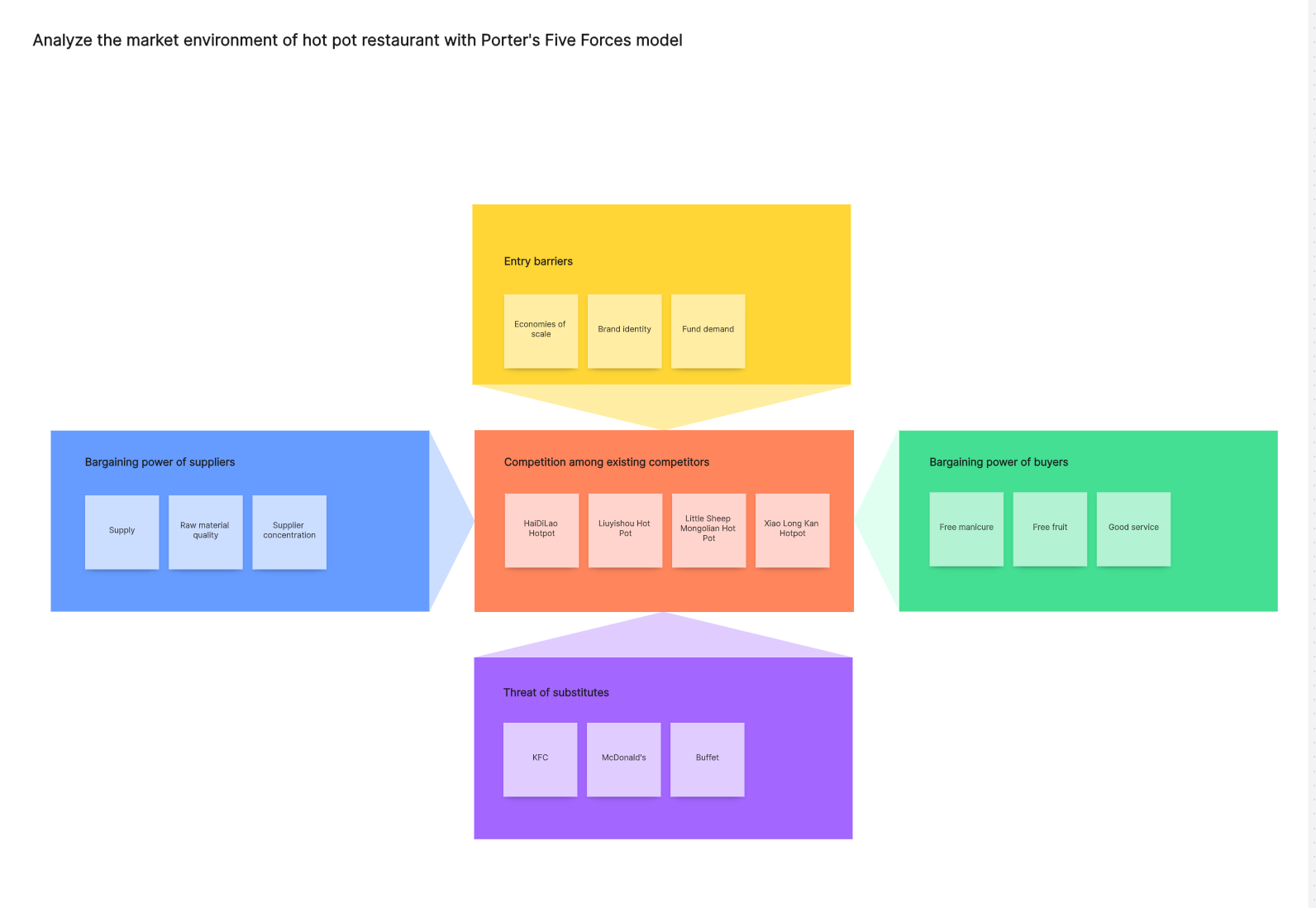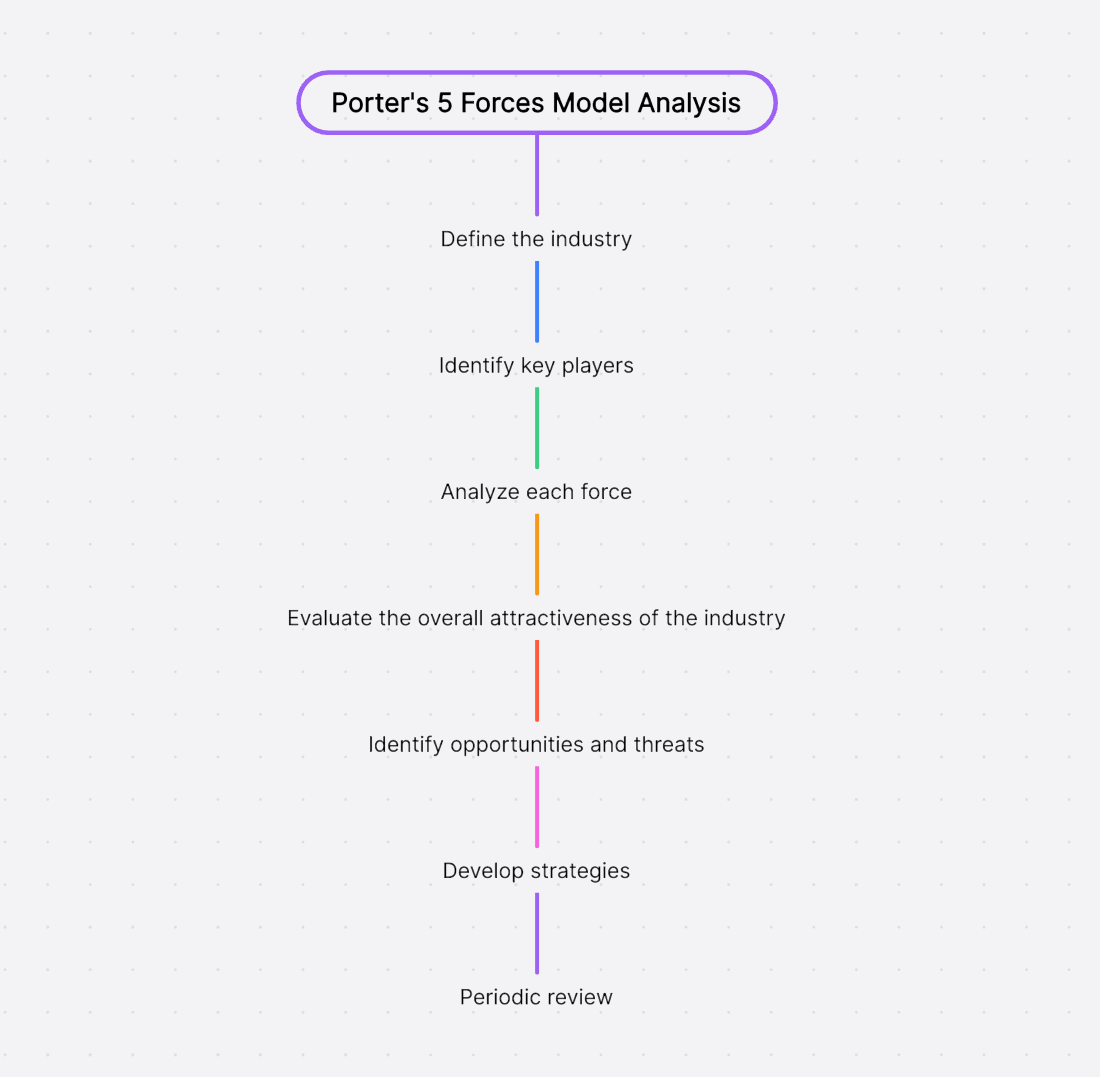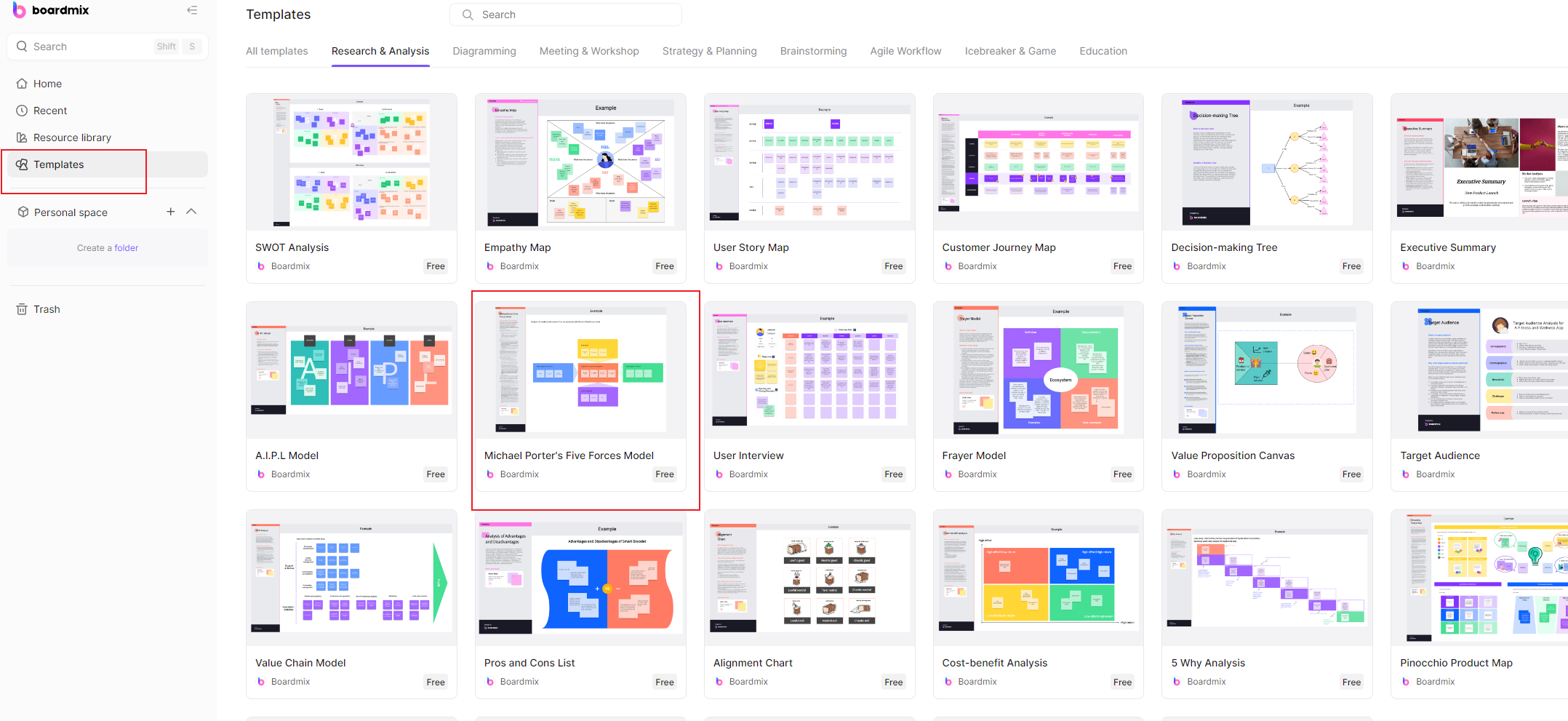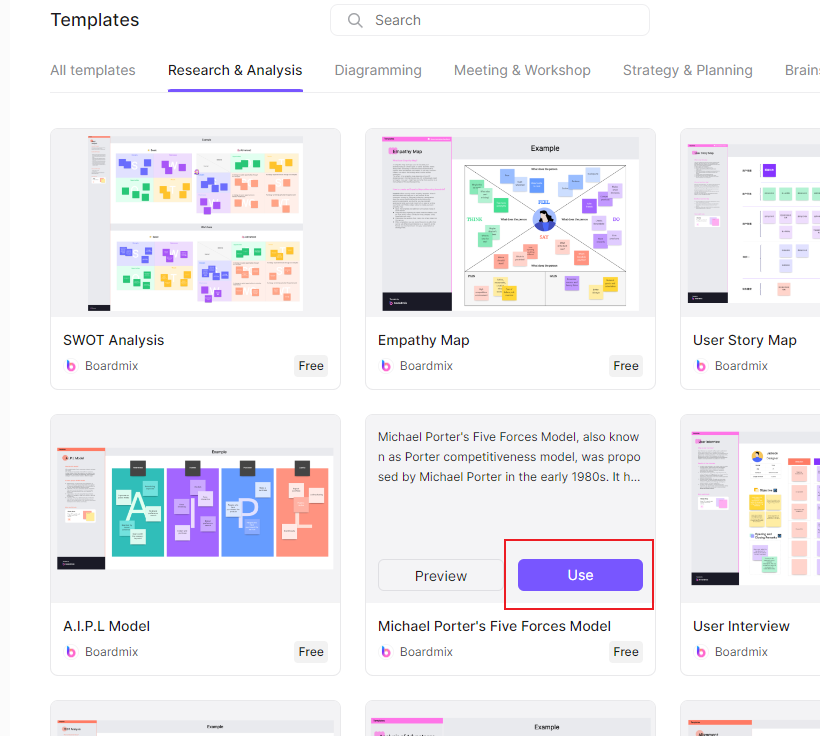In the dynamic landscape of business, understanding the intricacies of the competitive environment is crucial for strategic planning and long-term success. One powerful tool that aids in this understanding is Porter's Five Forces analysis, a framework developed by Michael Porter. This framework systematically evaluates the competitive forces within an industry, providing valuable insights that help businesses navigate challenges and capitalize on opportunities.
In this article, we will provide a detailed step-by-step guide to conducting a Porter's Five Forces analysis, enriched with examples. Also, we will introduce a perfect tool that can help complete the process.
Part 1. Steps for Conducting Porter’s 5 Forces Analysis
1. Define the Industry
Before delving into the analysis, it is essential to clearly define the industry or market you are examining. For example, if you're in the technology sector, specify whether you are focused on software development, hardware manufacturing, or another niche within the broader industry.
2. Identify Key Players:
Identify the major companies or players within the industry. For instance, in the global smartphone industry, key players include Apple, Samsung, and Huawei. Understanding their market share and strategies provides insights into the competitive dynamics.
3. Analyze each Force:
For a comprehensive understanding, analyze each of the five forces individually. Consider a practical example:
- Threat of New Entrants: In the airline industry, high capital requirements and regulatory approvals act as significant barriers to entry, protecting established players like Delta and United Airlines.
- Bargaining Power of Buyers: In the coffee retail industry, the bargaining power of buyers is high due to the availability of numerous alternatives. Customers can easily switch from one coffee shop to another based on price, taste, or convenience.
- Bargaining Power of Suppliers: The semiconductor industry faces supplier power concerns, as a limited number of suppliers control critical components. Intel, for example, may experience challenges if semiconductor manufacturers increase prices.
- Threat of Substitute Products or Services: In the streaming service industry, traditional cable television serves as a substitute. The increasing popularity of streaming platforms like Netflix, however, diminishes the threat of substitutes.
- Intensity of Competitive Rivalry: In the smartphone industry, the intense rivalry between Apple and Samsung is evident. Both companies constantly innovate, engage in marketing battles, and strive for technological leadership.
4. Evaluate the Overall Attractiveness of the Industry
Consider the combined impact of all forces on the industry's attractiveness. In the electric car market, for instance, the overall attractiveness has increased due to growing environmental concerns, government incentives, and advancements in battery technology.
5. Identify Opportunities and Threats
Based on the analysis, pinpoint specific opportunities for growth and areas where your business may be vulnerable. In the renewable energy sector, the shift towards sustainable practices presents opportunities for growth, while dependency on government subsidies poses a potential threat.
6. Develop Strategies
Armed with insights from the analysis, formulate strategies to mitigate identified threats and capitalize on opportunities. For a software company, this might involve investing in research and development to stay ahead of emerging competitors and regularly updating products to maintain a competitive edge.
7. Periodic Review
Remember, the business landscape is dynamic. Regularly revisit your analysis, especially when there are significant changes in the industry or market conditions. For instance, a technological breakthrough in energy storage could dramatically alter the dynamics of the renewable energy sector.
Part 2. How to Do Porter’s 5 Forces Analysis with Boardmix
Boardmix is an innovative online whiteboard tool that enables teams to collaborate effectively, brainstorm creatively, and plan projects efficiently. It offers a variety of drawing templates that can be used in different contexts, including Porter's 5 Forces Model analysis.
Porter's 5 Forces Model is a strategic tool that helps businesses understand the competitive dynamics within their industry. By visualizing this model on Boardmix's shared canvas, teams can discuss and strategize in real-time, leading to deeper understanding and more effective decision-making.
Boardmix stands out from other online whiteboard tools due to its user-friendly interface, versatile drawing templates, and real-time collaboration capabilities. Although it currently doesn't integrate with other ecosystems, its standalone features are robust enough to facilitate productive team collaboration.
Whether you're conducting a Porter's 5 Forces analysis or brainstorming new ideas, Boardmix provides the tools you need to visualize your thoughts and collaborate with your team.
Other Highlight Features of Boardmix:
- Real-Time Collaboration: Boardmix allows multiple users to work on the same whiteboard simultaneously, facilitating real-time brainstorming and discussion.
- Versatile Drawing Templates: With a wide range of templates, Boardmix supports various use cases from strategic planning to design thinking.
- User-Friendly Interface: Boardmix's intuitive interface makes it easy for users to navigate and utilize its features effectively.
- Robust Drawing Tools: From simple shapes to complex diagrams, Boardmix provides all the necessary tools for visualizing ideas and concepts.
- Unlimited Canvas Size: The canvas in Boardmix can be expanded indefinitely, providing ample space for large-scale brainstorming or planning sessions.
- Offline Access: Users can access their boards even when they're offline, ensuring uninterrupted productivity.
- Secure Data Protection: With advanced security measures in place, Boardmix ensures that your data remains private and protected at all times.
Step-by-step guide to use Boardmix for Porter’s 5 Forces Analysis:
Step 1. Sign up or login to Boardmix.com.
Step 2. Click Templates, scroll down to find the Michael Porter’s 5 Forces Model template (if you don’t see it, you can also search it with the name at the top search bar.)
Step 3. Hover your mouse on it, you can see the Use button, click it to apply the template.
Step 4. You could delete the example at left and start your analysis with the frame at right. Click the card, the tool bar will display then.
Step 5. You can also share the file with your teammate or colleagues and work together.
Conclusion
In conclusion, Porter's Five Forces analysis is a powerful tool for businesses seeking a structured approach to understanding and navigating their competitive landscape. By following these steps and considering real-world examples, organizations can unlock valuable insights that pave the way for informed decision-making and sustainable business success.
And Boardmix will help you conduct the Michael Porter’s 5 forces analysis more effectively with its versatile templates. Moreover, its collaborative features can empower your teamwork. Try it today!








